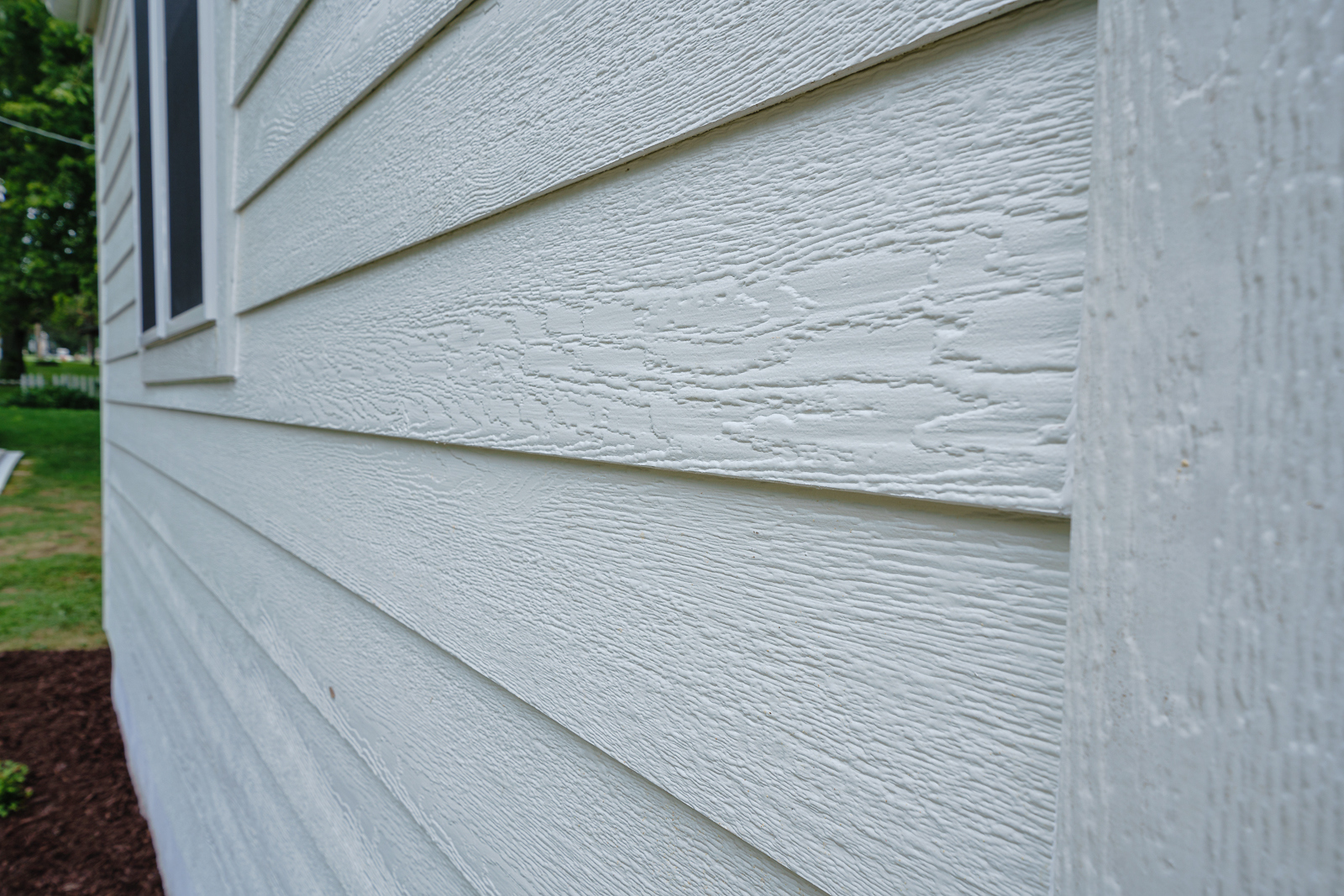Renovation6 min
How to Repair or Replace Rotted Siding
When traditional wood siding is used on a home, it is vulnerable to rotting and can often need significant repairs due to termites or moisture. Rotten siding must be replaced urgently to avoid further damage to the home's structure, and it's important to choose a more durable wood siding material that can stand up to the test of time. LP® SmartSide® Trim & Siding is one of the most durable siding materials available, due to the LP® SmartGuard® manufacturing process and its four components of protection.
In this guide, you'll learn how to replace rotted siding on a house and how to repair rotted wood siding, depending on the severity of your client's current siding's damage. With these simple tips, you'll be able to spot damage and recommend new products that will help your clients enjoy their home's new exterior look.
Safety Concerns When Removing Rotten Siding
Rotten siding breaks easily during removal and may require special safety considerations. When removing rotten siding, “always ensure you are wearing PPE,” says Isaac Ojeda, Construction Services Associate, LP Building Solutions.
If you discover mold during removal, consider partnering with professional mold removal companies and always wear the proper safety gear so you are not exposed to excessive mold, which could cause itchy or watery eyes, skin sensitivities and respiratory issues. "Ensure the structure is stable before starting a demo," Ojeda adds.
How to Replace Rotted Siding on a House
Replacing rotted wood siding is a simple process. Follow these steps to learn how to replace rotten siding:
Evaluate the siding. Does the entirety of the siding need to be replaced or just a portion of it? Examine it to find the rotted portions. Feel for pieces that seem waterlogged, damp or soft.
Gather the proper tools. You'll need standard woodworking tools to install your new siding, and to remove rotted siding you may need a pry bar and a utility knife.
Remove the siding. Remove nails and pull the existing rotten siding pieces off. Be careful at this stage; they may come off in pieces. “You can pry siding off with a pry bar or use a reciprocating saw to cut nails,” Ojeda says.
Inspect the water-resistant barrier. “It is possible that moisture may have penetrated behind the rotted siding and caused additional damage to the structure,” Ojeda says. “Depending on the severity of the damage, there may be a need to replace the studs, sheathing, housewrap and even the sheetrock.”
Clean the area. Ensure the places over which you'll install siding are clean, dry and free of any insects or debris.
Measure and cut new siding. If you are replacing only a section of siding, cut pieces to fit the section. If you're replacing a larger area, prepare multiple boards.
Install new siding. Be sure to carefully read through and follow the manufacturer's exact installation instructions to keep the product warranty fully intact. For example, LP SmartSide Trim & Siding installation instructions for installing lap siding provide detailed, specific guidelines on how to nail the new pieces of siding into place.


If you're beginning a re-side with removing rotten siding, Ojeda recommends coming up with a strategy on how to remove the siding. "Consider what you plan on keeping and reusing, and make sure the pieces of siding being replaced are available," he says. "If not, have a backup plan. And be careful not to damage existing building materials such as housewrap, sheathing, doors, windows and existing materials that a contactor plans on reusing."
While no siding can be completely waterproof, siding to replace rotten wood should be made with moisture-resistant elements. That's why LP SmartSide Trim & Siding represents a great option for siding replacement. Its many durable siding benefits, including industry-leading durability, are due to the LP® SmartGuard® Process. Waxes coating every strand of wood in the product aid in moisture resistance, and an overlay—the final element of protection—also resists moisture intrusion.
They're also backed by the LP® SmartSide® 5/50 Limited Warranty for added peace of mind. When you use LP SmartSide products to replace rotten wood siding, you're giving your clients one of the most durable siding solutions on the market, one that is designed to last.
Check out our trim and siding product page to explore our variety of timeless, durable LP SmartSide offerings you can use to replace rotted siding.
Continue Reading
Resiliency Solutions
5 minIntroducing LP® SmartSide® ExpertFinish® Naturals Collection™: Nature-Inspired Beauty Meets Engineered Performance
We're excited to introduce the LP® SmartSide® ExpertFinish® Naturals Collection™, a bold new addition to our trusted line of engineered wood siding and trim that delivers the warmth and beauty of nature with the advanced protection and performance builders and homeowners expect.
Labor Solutions
5 minChoosing the Right LP® Structural Solutions Product for Your Build
When it comes to building strong, reliable, and high-performing structures, the materials you choose matter. At LP Building Solutions, we understand that every project, whether it's a single-family home or a multifamily development, requires structural components that meet your needs for strength, durability, and efficiency.
Sustainability Solutions
5 minBuilding a More Sustainable Future with LP Building Solutions
In today's world, sustainability is no longer just a buzzword, it's a blueprint for responsible living and smarter building. As the construction industry seeks ways to reduce its environmental footprint, LP Building Solutions is focused on providing innovative building materials for eco-conscious builders to help reshape what it means to build sustainably
News & Stories3 min
History of Partnership with Gary Sinise Foundation
The LP Foundation is a proud partner of the Gary Sinise Foundation, which supports wounded veterans in several ways. You can learn more about the LP Foundation here.